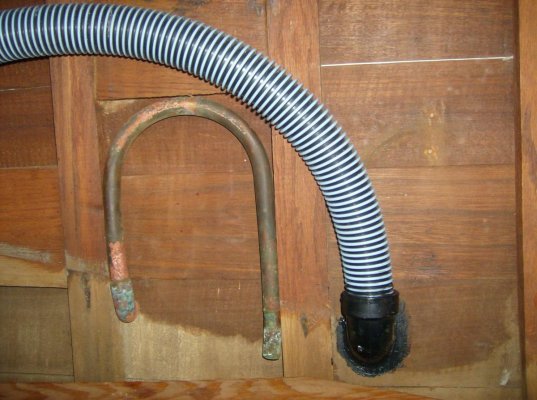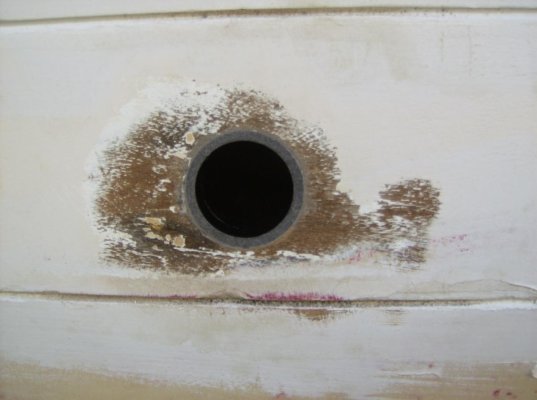I used pool suction hose for the entire run from pump to outlet.
It conforms easily to a smooth curve. And it is robust, tough hose.
If you examine the inner surface, it has flattened ridges, so smooth wall. It is after all designed to flow water in your pool.
One I used was 1.5 inch diameter. Also had a 1.25 inch diameter hose.
So two Rule pumps, pool hose to upturned outlets set 90* glued into the hull, with hose arcing up then down in a smooth sweep.
I used black polypropylene 90* 1.5 inch street elbows, glued into hull with Loctite S30 and the tube end glued into the expanded end of the street elbow.
If it won't fit your fitting, lightly heat end of hose with a heat gun, it will soften and stretch.
here is basic idea, compare with the 3/4 copper original design. Original design simply a 3/4 elbow passed thru the hull with a large copper washer screwed on outside.
My plastic arrangement is not different in essence than what the OEM did 45 years ago, yet a whole lot bigger capacity.
Wood is 1 inch thick.
Plenty of surface area for the goo to hold.
And sanded flush to hull. nothing to catch-snag.
Other end of hose is clamped to bilge pump outlet with standard clamp.
And this hose sat outside exposed for 10 years, when we had a pool, so it holds up to the environment.


